There are many types of kitchen knives that are used for different purposes. Choosing the right kitchen knife will help you cook food more manageable and safer. But with so many blades, how can you choose the knife that will suit your needs and cooking style? If you buy special kitchen knives without knowing how to use or care for them properly, you may put them in the knife drawer without the intention of picking them up again.
Many cutting tools have multiple names of the same style, so knife naming conventions can be very confusing. To help you understand it, we have put together a guide to types of kitchen knives and how to use them.
What are Different Parts of a Knife?
If you are looking for the most pleasing knife for your kitchen, you must know about the basis of the knife. For this purpose, we listed all the knife parts and their uses.
Point: The edge of the blade is known as the point. It is usually the sharpest ground and can be used to make holes or cuts in the food surface.
Blade: The blade is the metallic part of the knife, and all the performance of the knife depends upon this part. Cutting and chopping are the main areas where they work.
Edge: For cutting purposes, we use the edge as it is the sharpest part of the knife. It can be serrated or straightened. The sharpness of a knife depends on how finely the cutting edge is sharpened.
Spine: The spine is on the top and opposite the blade edge. The strength of the knife depends upon the thickness of the spine. It’s also essential to balance the entire knife.
Heel: The heel is at the lowest of the blade, farthest from the point, subsequent to the bolster. This edge is most commonly used when more force or pressure is needed by the cook to cut thicker or harder foods.
Tang: The tang plays an important role in maintaining the strength and balance of the knife. The best kitchen knives are often thought to have a “full tongue” that extends from the blade’s edge to the handle. In some designs, the tongue also acts as a handle.
Bolster: The ridge between the handle and the blade is goiter. It creates a small gap between the chef’s hands and the edge to prevent your fingers from slipping on the blade during the slicing process.
Categories of Knives
According to the structure, composition, and functionality, knives are primarily divided into two main categories:
- Forged knives
- Stamped Knives
The difference between these two knife categories is given below:
| Forged Knives | Stamped Knives |
| A handle is added after applying polish to the blade. | The handle is added before applying polish. |
| A Forged knife is composed of a single piece of metal. | The Stamped Knife is made up of a continuous steel sheet |
| A forged knife requires a time-consuming and labor-intensive manufacturing process. | The manufacturing process of these knives is cheaper and faster than forged knives. |
| The forged knife is easily recognizable by looking for the steel wedge between the blade and the handle. | Knives made in this way do not have blades and need to be sharpened more often. |
Different Types of Kitchen Knives
We have explored some useful information about different types of kitchen knives and their uses, so that you can easily choose the best one to carry out your daily tasks.
Steak Knife
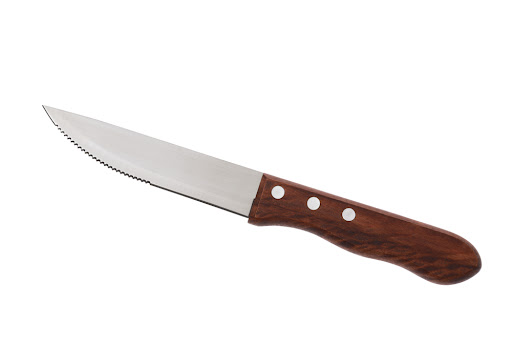
Steak knives are the only sharp kitchen knives in modern table settings used for slicing steak. These knives mostly have stainless steel blades, usually about 4 inches long and can be straight or serrated.
Steak knives can be found in various shapes, sizes, and patterned materials, but I like the classic wooden handle of these knives.
If you are a fan of grilling in the backyard like me, investing in a good steak knife set can take your grilling experience to the next level.
Chefs Knife
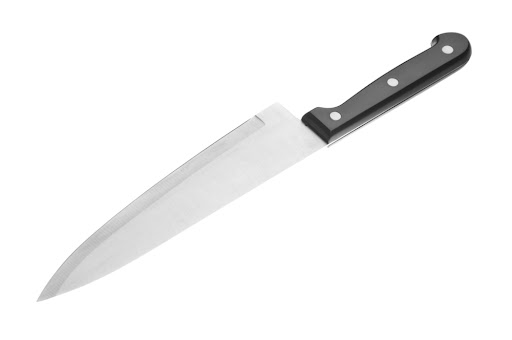
Chefs knife has long, wide blades with straight edges. It is the widest on the heel and tapers towards the finely pointed tip.
What is a chef’s knife used for?
The curved blade of the chef’s knife sways back and forth on the cutting board, making it a great tool for slicing and dicing many types of vegetables at once. The wide heel allows it to withstand heavy chopping pressure. This is useful when slicing thick or hard foods such as potatoes, onions and parsnips. A great all-rounder, the chef’s knife is one of the most versatile knives in the kitchen, perfect for everyday dicing and chopping knives.
Utility Knife
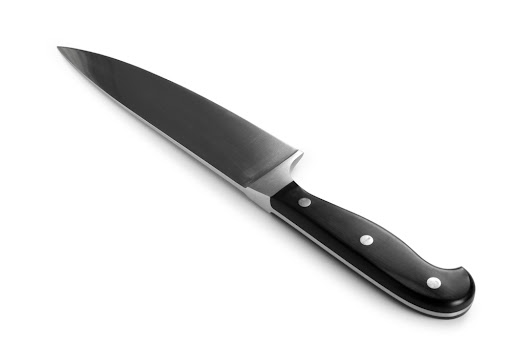
Utility knives are similar in shape to chef knives but smaller and slimmer. Some all-purpose knives have a sharp tip that tapers toward the spine, allowing for more complex tasks.
What is a utility knife used for?
Utility knives are useful for cutting small foods and vegetables such as shallot. Although it has many features of a chef’s knife, the all-purpose knife allows for more accurate cutting operations, making it a helpful tool when dealing with small foods. Therefore, if the chef’s knife is a little too big, you should get a universal knife instead.
Bread Knife
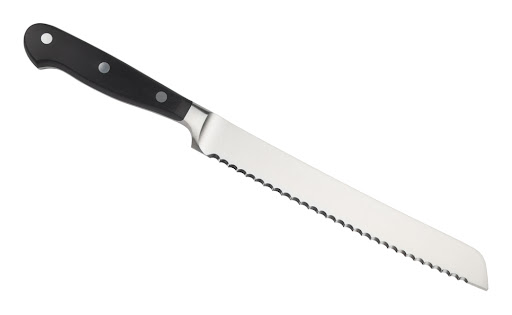
Have you recently started a hobby of baking bread? My first bread wasn’t great, but it took me a while to realize that the right bread knife was the secret to making fluffy bread look beautiful after the first cut.
What is a utility knife used for?
These kitchen knives are 6 to 10 inches long and are considered ideal for bread cutting. The serrated edges of the long bread knives are suitable for slicing without crushing the bread so that each piece will be the same height as the next piece. Also, Bread knives maintain their sharpness for up to a year when used solely for slicing bread.
Paring Knife
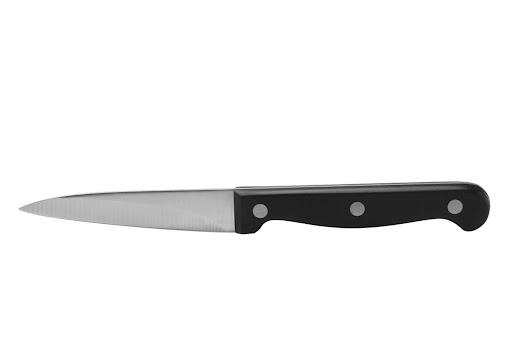
Paring knives have sharp, short, thin, evenly sized blades. It is lightweight and easy to use for light work.
paring knife uses?
Small but fine paring knives are used for kitchen tasks like Chopping, slicing, cutting fruits & vegetables and other cutting purposes. Due to its lightweight, they are ideal for trimming and drilling vegetables.
Santoku Knife
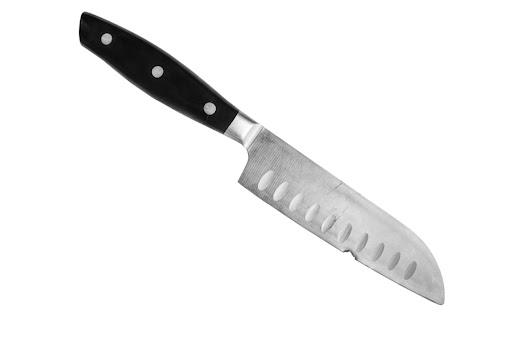
Santoku means “three uses” and is ideal for precision slicing, dicing and chopping. Santoku knives have a long, slightly tapered blade with a drip tip for more accurate and complex cutting operations.
What is Santoku Knife used for?
Santoku is considered the king of Japanese knives for a reason. It’s only 6 to 7 inches long and slightly shorter than a chef’s knife, but its super-hardened steel blade can handle almost any kitchen task and hold an edge longer than a Western knife.
These kitchen knives have similar uses but are used differently due to the different handle designs, curvatures, and blade angles. Santoku knives are ideal for cutting meat and agricultural products by pulling them directly rather than shaking them to finish the cut.
Boning Knife
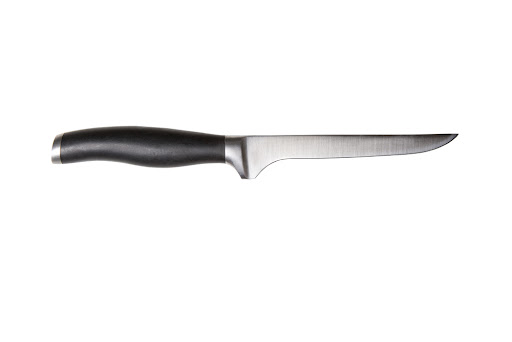
Boneless knives are thin blades with sharp edges, usually tapered upwards and sharpened. It is relatively short (usually only about 6 inches), and stiff in structure, but more flexible blades are available for delicate meats.
What is a watering knife used for?
Boneless knives are perfect for cutting meat bones and trimming the gristles for perfect joints or cutting before cooking. The pointed tip and fine blade are ideal for slicing around the bone without damaging the surrounding meat. You can also cut cartilage with a strong and stiff blade. A slightly more rigid blade is best for deboning pork and beef, but a more flexible blade is best for chicken. The watering knife is lightweight and easy to operate, so you can expect it to be comfortable and easy to use.
Carving Knife

Carving knives are long knives that are tapered. Carving knives, sometimes called perfect knives, are one of the most common knives in the kitchen. The narrow width reduces resistance when slicing food, resulting in cleaner, more consistent slices.
What is Carving Knife used for?
When serving meat such as chicken, pork, mutton, or beef, carving knives are perfect for this task as they produce thin, clean, uniform-sized slices. It can also trim large fruits and vegetables difficult to cut with small or wide knives, such as melons and zucchini. The long, thin blade is also ideal for cake slicing, as it is long enough to cut the perfect slice in a single smooth slicing motion.
Fillet Knife
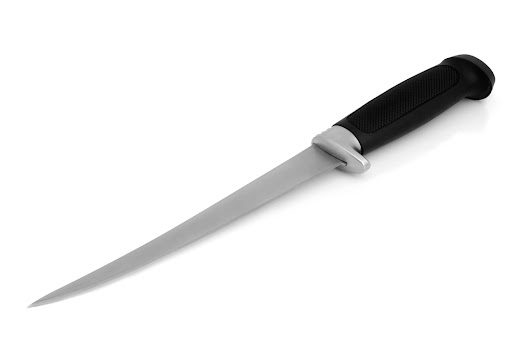
Fillet knives are long knives with flexible blades. It has sharp edges and finely pointed tips to pierce the skin and allow complex bone removal tasks. It looks like a watering knife, but the blade is thin and flexible.
What is a fillet knife used for?
The thin, flexible blade is perfect for removing bones without damaging delicate fish flesh. The chef can slice the spine of the whole fish to make the perfect fillet. Fillet knives are great for all kinds of fish work, so if you like to try lots of new recipes.
Salmon Knife
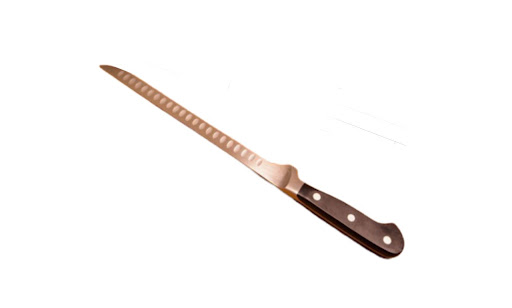
The salmon knife has a long, flexible double-edged blade to fill large fish. The slim and sharp salmon knife allows accurate fillet and skin removal. Also, many designs have indentations on the sides of the blade.
What is a salmon knife used for?
Salmon knives cut, fill and remove large fish such as salmon. Slim enough to fit the skin and meat without damaging the delicate fish, cooks can prepare clean and tidy fillets. It can be used to create accurate fillets, which is very effective in minimizing waste. Do many salmon knives have indentations or indentations along the surface of the blade that reduce drag during cutting and prevent raw fish from adhering to the meta
FAQs
Which type of knife should be used in the kitchen?
Chef knives are one of the maximum flexible tools. Any expert chef will say that is a must. It should feel like a wing of your arm. Great for chopping and dicing vegetables, fruits and herbs.
What kind of knife is illegal in the UK?
There are many illegal knives in the UK. Some of them include daggers, straight razors, swords, Disguised Knives, Flick knives, butterfly knives, flick knives, etc.
What types of kitchen knives do I need?
The best knife is the one that you can use over and over again. If you plan many outdoor activities, a folding knife is a perfect tool. While using a fixed blade is better if you will only be doing light tasks around the house.
Wind up!
To find the right knife for the job, you’ll need to know what job you’ll be doing. Will you be chopping, slicing, cutting, or carving? We hope that the above information will help you choose the right knife.
We hope that our in-depth guide about different types of kitchen knives will help you to choose the right knife. Still, if you have any queries, please visit our comment section.






